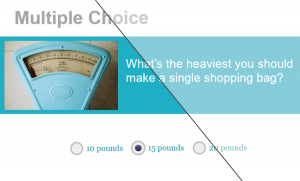Working with E-Learning Vendors: The RFP
Last month I gave some tips on how to create a Request for Information (RFI). This week let’s look at the Request for Proposal (RFP). The RFI and RFP are the two primary tools you can use to select which vendor from a group is the best one to meet your needs.
RFPs are formal documents written to vendors that specifically list what you want and help the vendor provide a specific, binding proposal. And, they can certainly benefit you! They can help you make apples-to-apples comparisons of possible vendors.
Since an RFP asks for a specific, binding proposal you will want to give enough detail so the vendor can respond accurately. Most of the RFPs I see are somewhere between 5 and 10 pages, but they can be as long as 500 pages depending on the specific needs and size of the project!
You can find sample RFPs online. (I did a search for Sample RFP and came up with several samples for different types of projects.) While specific elements will vary based on the type of project (LMS selection, custom course development, etc.), there are major elements you will want to include regardless of the type of project. These include:
- Company Background
- Project Overview
- Terms (such as payment terms, experience requirements, reference requirements, and confidentiality statements)
- Scope of Work or Product Requirements (pulled from your internal documents)
- Instructions for Submission
- Selection Criteria
- Contact Information
The most common problems I’ve seen with RFPs include lack of input from all parties (such as IT), sketchy details about the project and what is expected, and unclear guidelines about how the vendor should respond. To help reduce these problems, get all major stakeholders to sign off on the request and have someone who isn’t close to the project review the document to make sure it is clear.

 Previous Post
Previous Post



